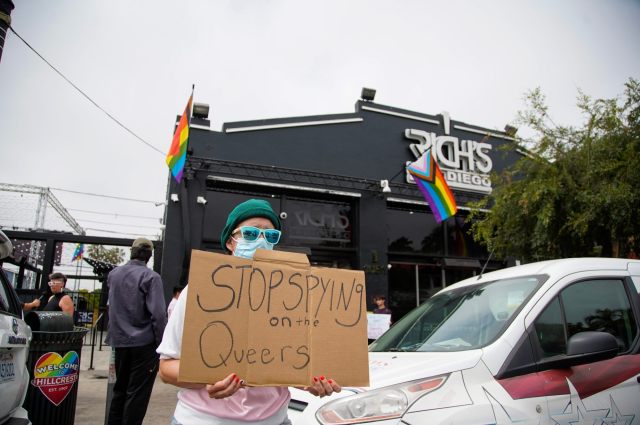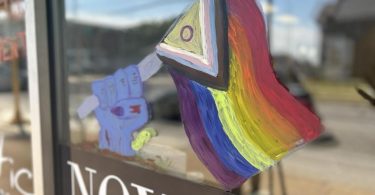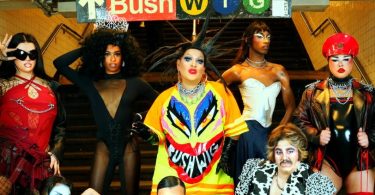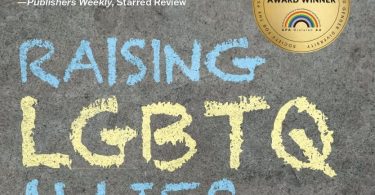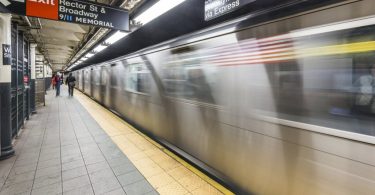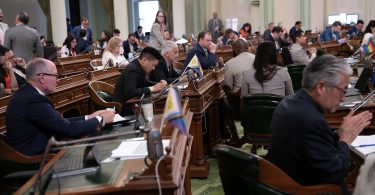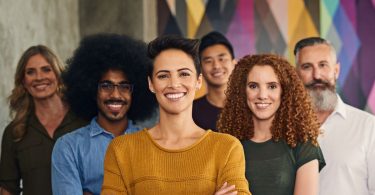People protest as San Diego police hold a press conference with local LGBTQ community leaders to announce plans for new streetlights with license-plate readers outside Rich’s, a gay nightclub in Hillcrest, on Monday, July 8, 2024. (Alejandro Tamayo / The San Diego Union-Tribune)
Guadalupe Castillon-Mendoza is still recovering emotionally from the day in June when a projectile was shot through a window at their workplace at Trans Fronteras, a Hillcrest-based nonprofit that serves transgender migrants.
It felt like yet one more attack targeting their community.
Now, they’re nervous about attending the Pride parade and festival on Saturday. And they’re conflicted about how best to keep the community safe, and what role police should play.
Castillon-Mendoza isn’t the only person who feels caught between fears over public safety and an uneasy relationship with law enforcement.
Half a century after a police raid on a gay bar sparked the modern LGBTQ+ rights movement, many community leaders and members are divided on the role law enforcement should play during Pride and more generally. While some say the police make them feel safe, others — especially those who have had negative experiences with law enforcement — say their presence only heightens their fears.
They’re divided, too, on the recent move by police to install 14 surveillance cameras before Pride for added security. Castillon-Mendoza agrees the event needs protection, but is worried about how the cameras will be used and monitored.
“Do I think that more guns equal safety? No. But do I think that somebody can go and do something stupid that ruins a lot of people’s lives? Yes,” said Castillon-Mendoza.
Drawing a quarter-million people each year, San Diego Pride — with its parade, festival, block party and rally — is known as the city’s largest annual civic event. San Diego police provide security with barricades, threat assessments and more, and also march in the parade.
This year, for the first time, they will have a float, with officers in special Pride T-shirts instead of uniforms — an effort to strike a balance between the standard police presence and a more fun side to the department, spokesperson Lt. Dan Meyer said.
That’s in contrast to 2020, when law enforcement was banned from marching in Pride — a decision made in solidarity with the Black LGBTQ+ community after the killing of George Floyd ignited nationwide protests against police brutality.
“Back then, it was either march not in uniform and unarmed, or you’re not allowed in our Pride parade, and that is not the message of Pride today,” Meyer explained.
For some, this year’s move is a step in the right direction but doesn’t go far enough.
Angelle Maua, president of San Diego Black Pride, would rather police wear plain clothes, whether they’re marching or patrolling, saying the presence of uniformed police can be traumatizing for members of her community.
Plainclothes officers, she added, could be more strategic and effective, and could better respond to a threat. “If there’s an entity that is going to do us harm, I think they will be more impactful in taking that person out, because that person would not know that that is a police officer in civilian clothing,” she said.
A report from 2019 found that marginalized groups, including people of color and those who are assumed to be LGBTQ+, faced biased policing from San Diego County’s law enforcement agencies. Advocates point out that transgender people in particular face heightened risks of violence in jail, police profiling and other targeting.
Frances Yasmeen Motiwalla, a member of Activist San Diego, doesn’t want police in the parade at all. Pride events are held today to honor the Stonewall uprisings of 1969, when police raided the Stonewall Inn in New York City and patrons fought back in a dayslong confrontation.
“It’s hard to trust a department that is claiming to be our protectors when we see them hurting members of our community regularly,” Motiwalla said.
To other community members, like Eddie Reynoso, the VIP host at Rich’s NightClub in Hillcrest, it’s necessary. He supports police involvement at Pride and more surveillance cameras in the area. Rich’s and another nearby LGBTQ+ bar, Gossip Grill on University Avenue, had already installed their own license plate reader cameras before Pride for added security, even before police announced their plans.
Reynoso was shot in the eye and seriously injured in May in a drive-by pellet gun shooting outside Rich’s that police are investigating as a possible hate crime.
The incident has changed him, Reynoso said. He no longer feels comfortable working on the sidewalk, where he used to greet customers.
Most people he’s spoken to support the new cameras, but he understands why some — including some of his friends and colleagues — distrust police.
“I came here with a fear of police,” he said. His opinion only started to shift with Meyer as the department’s LGBTQ+ liaison — a role Meyer held for a decade before moving on in 2020. Meyer came to community meetings and was responsive to residents’ needs, Reynoso said, and it finally felt like the community had seats at the table.
Longtime local LGBTQ+ advocate Nicole Murray Ramirez thinks age plays a key role in what he sees as a disconnect between those who support current police efforts and those who don’t.
“These are mostly young people that have not lived the history of our community,” he said. “I am a person that was beaten by police — and not only Los Angeles when I lived there, but in San Diego — and our community has progressed, as our city and as society has, when it comes to understanding LGBT people.”
But Murray Ramirez said the uptick in hate crimes and violent rhetoric against LGBTQ+ people today recalls what he experienced in the 1970s.
According to data released in March, reported hate crimes in San Diego nearly doubled from 2022 to 2023, jumping from 38 to 66. Most incidents were racially motivated, but about 30 percent, or 21 incidents, stemmed from bias against someone’s sexual orientation.
And last year, The Human Rights Campaign declared a state of emergency for LGBTQ+ people in the U.S. for the first time following a significant increase in anti-LGBTQ+ legislation across the country.
After violent incidents like those at Rich’s and Trans Fronteras, police will generally increase security in a neighborhood, Meyer said — though he declined to point to specifics, citing safety. He said his department has worked to improve relations with the LGBTQ+ community, including with its Pride presence this year, but acknowledged limits to that.
“When you talk about what the community wants, depending on who you talk to, you’re gonna get different responses,” he said. “No matter what we do, we’re never going to make everybody happy.”
He said he understands people’s misgivings about the police presence at Pride, but “public safety has to take priority,” he added.
But to Maua, from San Diego Black Pride, it feels like momentum toward racial justice has been lost since 2020, when San Diego Pride barred police from the parade. While the conversations about police relations with the community haven’t stopped, “they’re just few and far between with our White allies.”
Police are “trying to make compromise, but they’re doing it on their own terms,” she said.
Maua acknowledges that San Diego Pride, which organizes the parade and festival, has been receptive to the Black LGBTQ+ community’s concerns.
In 2020, when it barred police from participating, the organization also launched a plan to center Black voices in conversations about police reform and the community’s relationship with police and to create tangible accountability and transparency goals for law enforcement.
The group also created a Healing & Safer Communities Committee, which in 2022 made policy and practice recommendations to San Diego Pride, law enforcement and local officials to help them better serve the people of color in the LGBTQ+ community. San Diego Pride plans to release a final report of this work later this year.
For people like Levi Giafaglione, an advocate for Lived Experience Advisors, which supports people experiencing homelessness, the mixed feelings about the police presence at Pride come down to how each person understands what it means to be safe.
Giafaglione is formerly homeless and has PTSD, and says that it can be troubling to see police officers, especially in uniform, even if they are there to serve as protection at Pride. Over the years, he’s seen police remove LGBTQ+ people experiencing homelessness and their belongings from the streets, as well as harass his friends who are transgender and Black.
“It’s nice to know that safety is nearby,” he said, but it comes down to a question of “what our community defines as safety.”

